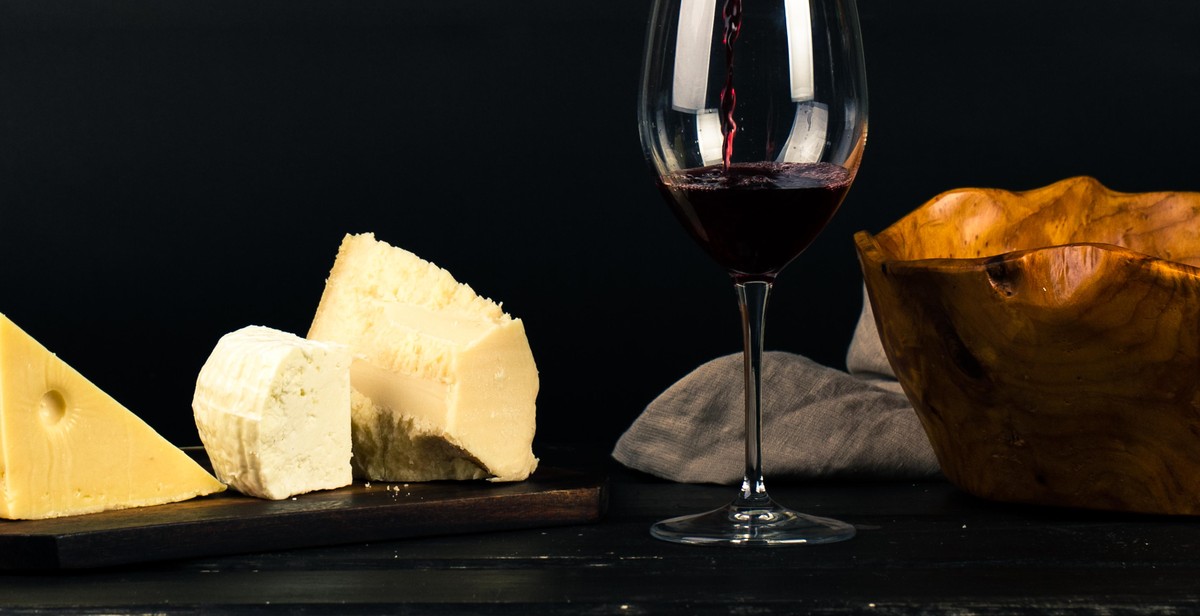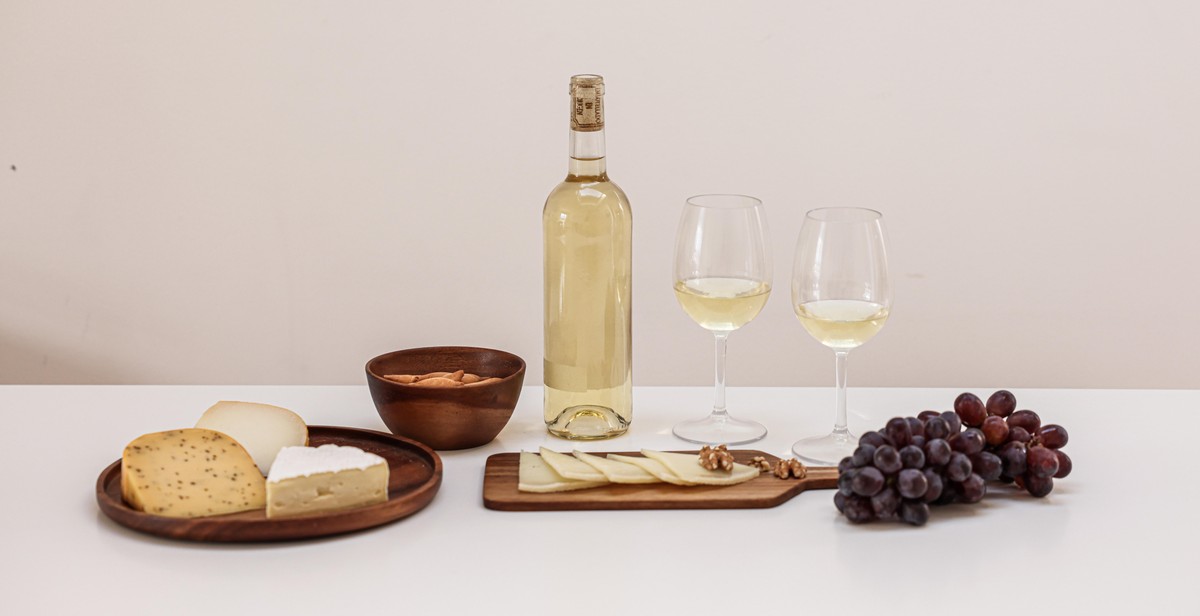Introduction
Wine and cheese pairing is an art that has been practiced for centuries. The combination of wine and cheese creates a perfect harmony of flavors that enhance the taste of both. Whether you are a wine connoisseur or a cheese lover, pairing the right wine with the right cheese can be a daunting task. With so many varieties of wine and cheese available, it can be overwhelming to know where to start.
Why Wine and Cheese Pairings are Important?
Pairing wine and cheese is not just about taste, it’s about science. The flavors of wine and cheese are complex and can be enhanced or diminished depending on the combination. When paired correctly, the flavors of wine and cheese complement each other, bringing out the best in both. A good wine and cheese pairing can elevate a simple meal into a gourmet experience.
Choosing the right wine for a particular cheese can be challenging, but it’s worth the effort. An ideal pairing can create a balance of flavors that brings out the unique characteristics of both the wine and the cheese. In this article, we will explore the basics of wine and cheese pairing and provide tips on how to choose the right wine for cheese pairing.
Let’s dive in and discover the art of wine and cheese pairing.

Understanding Complementary Flavors
When it comes to wine and cheese pairing, it’s important to understand the concept of complementary flavors. Complementary flavors refer to the way in which the flavors in the wine and cheese interact with each other to create a harmonious taste experience. The goal is to find a wine and cheese pairing that enhances and brings out the best in each other, rather than overpowering one another.
Salty and Savory Cheese with Fruity Wines
For salty and savory cheeses such as cheddar or gouda, pairing them with a fruity wine can create a complementary balance. The sweetness of the wine can help to cut through the saltiness of the cheese, while the acidity in the wine can balance out the richness of the cheese. Fruity wines like Riesling, Pinot Noir, or Beaujolais are great options to pair with these types of cheeses.
Soft and Creamy Cheese with Light-Bodied Wines
Soft and creamy cheeses like brie or camembert pair well with lighter-bodied wines such as Chardonnay or Sauvignon Blanc. These wines have a crisp acidity that can cut through the creaminess of the cheese, while also complementing its subtle flavors. The light-bodied wine won’t overpower the cheese, allowing its delicate flavors to shine through.
Strong and Pungent Cheese with Full-Bodied Wines
Strong and pungent cheeses like blue cheese or gorgonzola require a wine that can stand up to their bold flavors. Full-bodied wines like Cabernet Sauvignon or Syrah are great options to pair with these types of cheeses. The tannins in the wine can help to cut through the richness of the cheese, while also complementing its strong flavors.
Understanding complementary flavors is key to creating the perfect wine and cheese pairing. By pairing wines and cheeses that complement each other, you can create a taste experience that is greater than the sum of its parts.

Factors to Consider when Choosing Wine for Cheese Pairing
Pairing wine with cheese is an art that requires some level of expertise. The right wine and cheese pairing can enhance the flavor of both, while a mismatched pairing can lead to a disappointing taste experience. When choosing wine for cheese pairing, it is essential to consider the following factors:
Fat Content of Cheese
The fat content of cheese is an essential factor to consider when choosing wine for cheese pairing. Full-bodied wines such as Cabernet Sauvignon or Syrah pair well with high-fat cheeses like Brie and Camembert. These wines have high tannins that cut through the cheese’s richness and cleanse the palate, making each bite taste as good as the first.
Age of Cheese
The age of cheese is another factor to consider when choosing wine for cheese pairing. Aged cheeses like Parmesan or Cheddar pair well with full-bodied wines such as Cabernet Sauvignon or Merlot. These wines have a higher alcohol content and can stand up to the cheese’s intense flavors. Younger cheeses like fresh goat cheese or feta pair better with lighter wines like Sauvignon Blanc or Pinot Grigio.
Flavor Intensity of Cheese
The flavor intensity of cheese is also a critical factor to consider when choosing wine for cheese pairing. Mild cheeses like mozzarella or Havarti pair well with light-bodied wines like Chardonnay or Pinot Noir. These wines complement the cheese’s subtle flavors and do not overpower them. Strong-flavored cheeses like Roquefort or Gorgonzola pair well with sweet wines like Port or Sherry. The sweetness of the wine balances the cheese’s sharpness, resulting in a harmonious taste experience.
Tannins in Wine
Tannins are naturally occurring compounds found in the skins, seeds, and stems of grapes. They give wine its astringency and bitterness. When choosing wine for cheese pairing, it is essential to consider the tannins in the wine. High-tannin wines like Cabernet Sauvignon or Syrah pair well with high-fat cheeses like Brie or Camembert. The tannins cut through the cheese’s richness, cleansing the palate and preparing it for the next bite. Low-tannin wines like Pinot Noir or Chardonnay pair well with milder cheeses like mozzarella or Havarti. The wine’s subtle flavors complement the cheese’s delicate flavors, resulting in a well-balanced taste experience.
| Cheese Type | Wine Type |
|---|---|
| High-fat Cheese | Cabernet Sauvignon, Syrah |
| Aged Cheese | Cabernet Sauvignon, Merlot |
| Mild Cheese | Chardonnay, Pinot Noir |
| Strong-flavored Cheese | Port, Sherry |
By considering these factors, you can choose the right wine for cheese pairing and enhance the taste experience. Remember that wine and cheese pairing is subjective, and personal preferences play a significant role in the pairing process. Experiment with different wine and cheese combinations to find your perfect match.

Popular Wine and Cheese Pairings
Pairing wine with cheese is an art that requires knowledge of complementary flavors. While there are no hard and fast rules, certain wine and cheese combinations work well together. Here are some popular wine and cheese pairings:
Chardonnay with Gouda
Chardonnay is a full-bodied white wine that pairs well with the nutty and buttery flavors of Gouda cheese. The wine’s oakiness complements the cheese’s creamy texture, making for a perfect pairing.
Pinot Noir with Brie
Pinot Noir is a light-bodied red wine that pairs well with the soft and mild flavors of Brie cheese. The wine’s acidity cuts through the cheese’s richness, making for a balanced and delicious pairing.
Cabernet Sauvignon with Cheddar
Cabernet Sauvignon is a full-bodied red wine that pairs well with the sharp and tangy flavors of Cheddar cheese. The wine’s tannins complement the cheese’s boldness, making for a complex and flavorful pairing.
Merlot with Blue Cheese
Merlot is a medium-bodied red wine that pairs well with the pungent and salty flavors of Blue cheese. The wine’s fruitiness balances out the cheese’s sharpness, making for a delightful pairing.
| Wine | Cheese |
|---|---|
| Chardonnay | Gouda |
| Pinot Noir | Brie |
| Cabernet Sauvignon | Cheddar |
| Merlot | Blue Cheese |
Remember, wine and cheese pairing is subjective, and what works for one person may not work for another. The key is to experiment with different combinations and find what works best for your palate. Happy pairing!

Conclusion
Choosing the right wine for cheese pairing can be a challenging task, but it can also be an enjoyable experience. By exploring complementary flavors, you can create a harmonious and satisfying pairing that enhances the taste of both the wine and cheese.
Experiment with Different Pairings
The key to finding the perfect wine and cheese pairing is to experiment with different combinations. Try pairing different types of cheese with different wines to discover which flavors work best together. Don’t be afraid to step out of your comfort zone and try new things!
Remember that there are no hard and fast rules when it comes to wine and cheese pairing. It’s all about finding what works for you and your taste buds. So, be creative and have fun!
Consider the Occasion
When choosing a wine and cheese pairing, it’s important to consider the occasion. Are you hosting a formal dinner party or a casual get-together with friends? The occasion can influence the type of wine and cheese you choose.
Final Thoughts
Pairing wine and cheese is an art form that requires a bit of knowledge and experimentation. By following the tips outlined in this article, you can create a pairing that is sure to impress. So, go ahead and explore the world of wine and cheese pairing – your taste buds will thank you!
